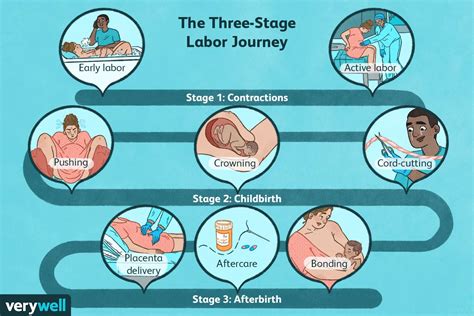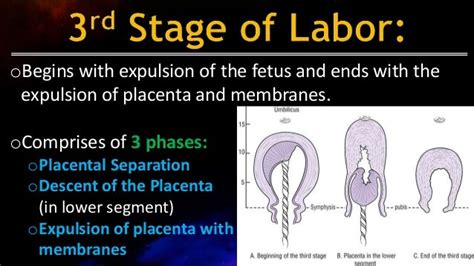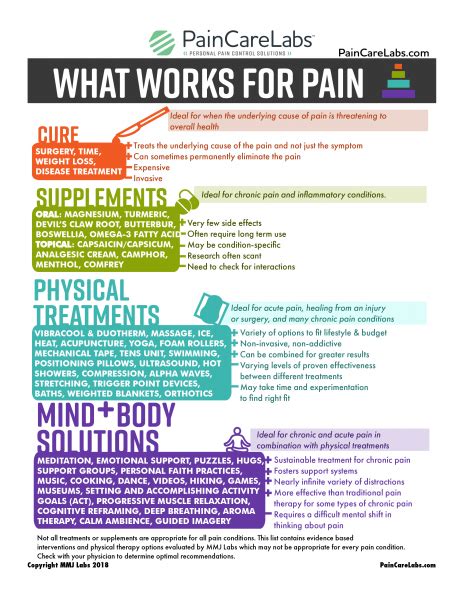Intro
Understand the stages of labor and delivery, from early labor to postpartum, including latent phase, active labor, transition, and pushing, to prepare for a smooth childbirth experience.
The process of labor and delivery is a complex and highly individualized experience for each woman. Understanding the different stages of labor can help expectant mothers feel more prepared and empowered as they approach childbirth. Labor is typically divided into three main stages, each with its own distinct characteristics and milestones. In this article, we will delve into the details of each stage, exploring what happens during labor, the role of medical professionals, and the emotional and physical experiences of the mother.
As women approach the end of their pregnancy, they often have many questions about what to expect during labor and delivery. Will it be a long and difficult process, or a quick and easy one? What are the different stages of labor, and how will they know when they are progressing from one stage to the next? What kind of pain management options are available, and how will they decide which one is right for them? Answering these questions and more, this article aims to provide a comprehensive guide to the stages of labor and delivery, helping expectant mothers feel more informed and confident as they prepare for the arrival of their baby.
The experience of labor and delivery is unique to each woman, and it's essential to remember that every pregnancy is different. While some women may have a quick and easy labor, others may experience a longer and more challenging process. However, by understanding the different stages of labor and what to expect during each one, women can feel more prepared and in control as they navigate this significant life event. Whether they are having a vaginal delivery or a cesarean section, knowing what to expect can help reduce anxiety and make the experience less overwhelming. With this in mind, let's explore the different stages of labor and delivery in more detail.
First Stage Of Labor

Early Labor
Early labor is the initial phase of the first stage, and it's characterized by mild contractions that may feel like menstrual cramps or a tightening sensation in the uterus. During this phase, the cervix begins to dilate and efface, and women may experience a bloody show, which is a sign that the cervix is starting to open up. Early labor can last for several hours, and women may be able to continue with their daily activities, such as walking, eating, and resting.Active Labor
Active labor is the next phase of the first stage, and it's characterized by stronger and more frequent contractions. During this phase, the cervix dilates more quickly, and women may experience more intense pain and discomfort. Active labor can last for several hours, and women may need to start using pain management techniques, such as breathing exercises, massage, or medication.Transition Phase
The transition phase is the most intense part of labor, with contractions coming rapidly and the cervix dilating from 7 to 10 centimeters. During this phase, women may feel overwhelmed and exhausted, and they may need to use all their energy to push through the contractions. The transition phase is usually the shortest part of labor, lasting around 30 minutes to an hour.Second Stage Of Labor

Pushing Techniques
There are several pushing techniques that women can use during the second stage of labor. These include: * Deep breathing: taking slow, deep breaths to help relax and focus * Perineal massage: massaging the perineum to help reduce tearing and promote healing * Position changes: changing positions to help the baby move down the birth canal * Verbal encouragement: receiving encouragement and support from medical professionals and loved onesThird Stage Of Labor

Placenta Delivery
The placenta is delivered through the birth canal, and women may be able to see it as it's expelled. The placenta is a vital organ that played a crucial role in the baby's development, and it's essential to ensure that it's delivered safely and completely. Medical professionals will usually check the placenta to make sure it's intact and that there are no remaining fragments in the uterus.Pain Management Options

Natural Pain Relief
Some women may prefer to use natural pain relief methods, such as: * Hypnobreathing: using hypnosis and deep breathing to help manage pain and anxiety * Aromatherapy: using essential oils to help promote relaxation and reduce pain * Music therapy: listening to music to help reduce pain and promote relaxation * Visualization: using visualization techniques to help manage pain and anxietyEmotional And Physical Support

Partner Support
Partners can play a vital role in supporting women during labor and delivery. They can: * Provide emotional support: offering encouragement and reassurance * Provide physical support: helping with positioning, massage, and breathing exercises * Advocate for the woman: speaking up for her needs and preferences * Take photos and videos: capturing memories of the birthPostpartum Care

Postpartum Recovery
Postpartum recovery can take several weeks, and women may need to: * Rest and recover: taking time to rest and recover from the birth * Manage pain: using pain-relieving medication and other techniques to manage pain * Care for the newborn: learning to care for the newborn and manage feeding, sleeping, and other needs * Seek support: reaching out to family, friends, and medical professionals for support and guidanceWhat are the different stages of labor?
+The different stages of labor are the first stage, which includes early labor, active labor, and the transition phase, the second stage, which is the pushing stage, and the third stage, which is the delivery of the placenta.
What are some pain management options during labor?
+Some pain management options during labor include breathing exercises, massage, medication, water immersion, and acupuncture. Women may also prefer to use natural pain relief methods, such as hypnobreathing, aromatherapy, music therapy, and visualization.
What kind of support can women receive during labor and delivery?
+Women can receive emotional and physical support from their partner, family, and friends, as well as medical professionals. Having a supportive team can help women feel more confident and empowered, and can make the experience less overwhelming.
As we conclude our exploration of the stages of labor and delivery, it's essential to remember that every woman's experience is unique, and what works for one woman may not work for another. By understanding the different stages of labor and what to expect during each one, women can feel more prepared and in control as they navigate this significant life event. We encourage readers to share their own experiences and tips for managing labor and delivery, and to reach out to medical professionals for guidance and support. Whether you're a first-time mom or a seasoned pro, knowing what to expect can make all the difference in having a positive and empowering birth experience.
